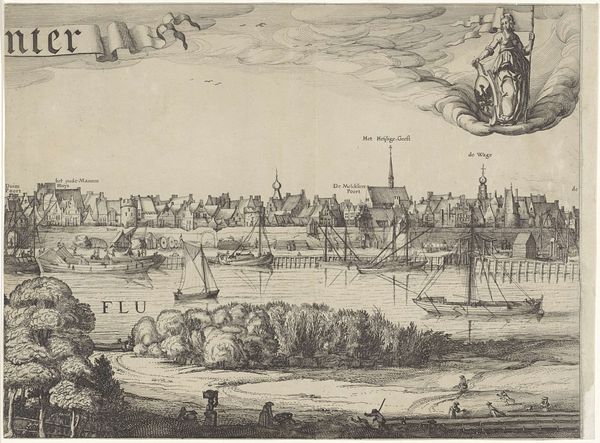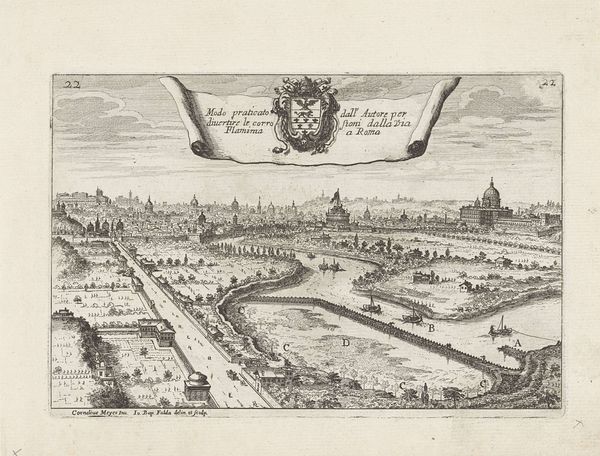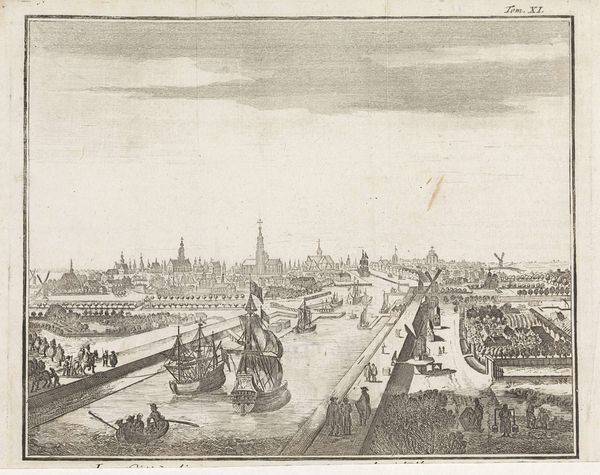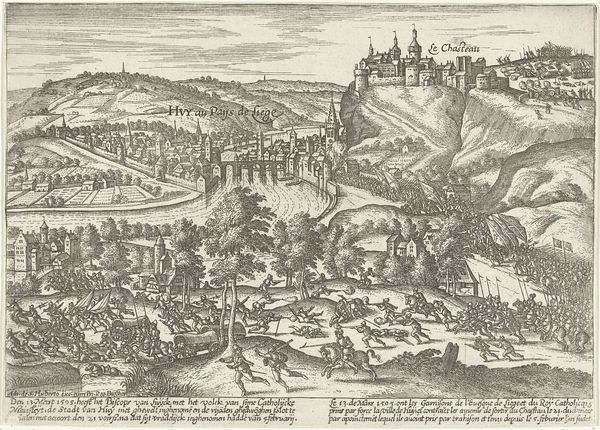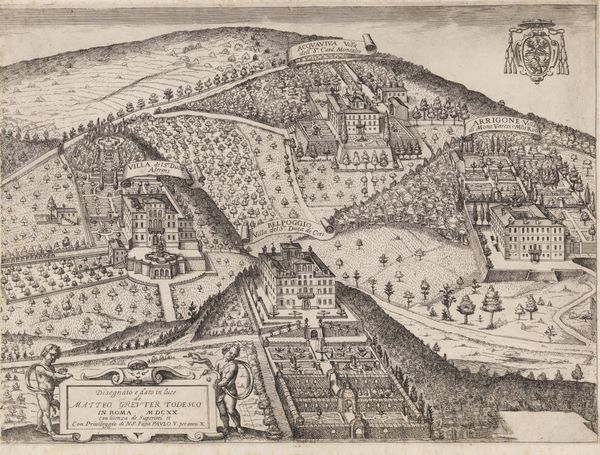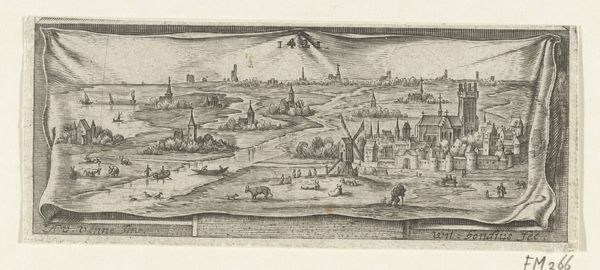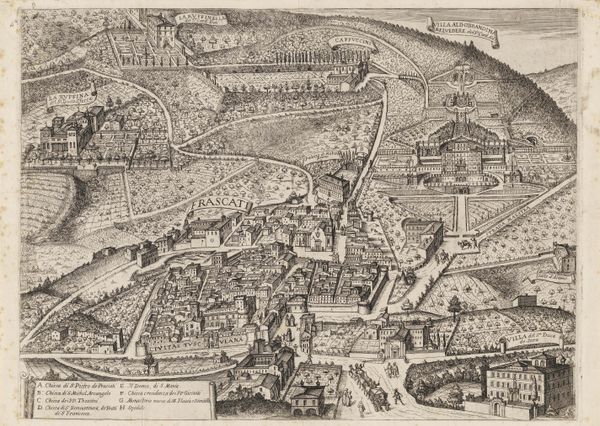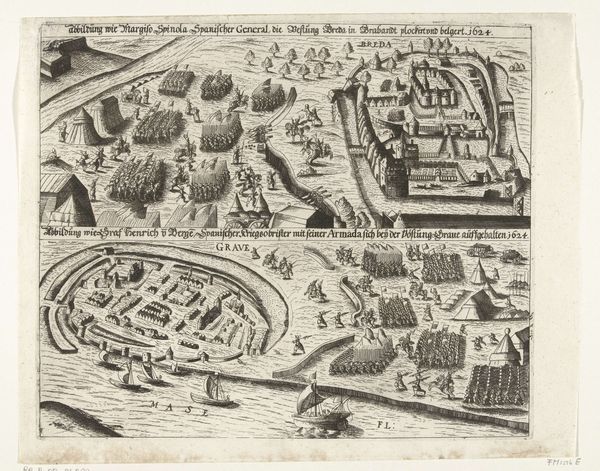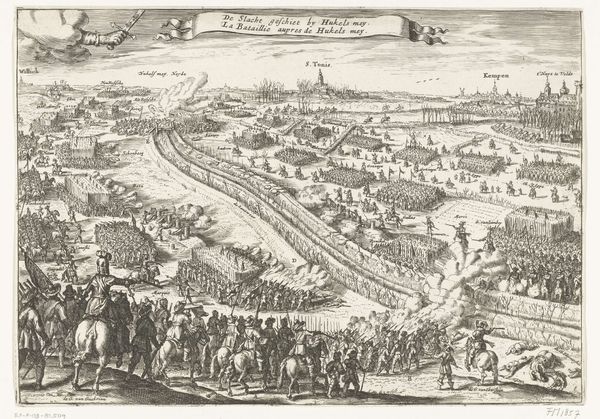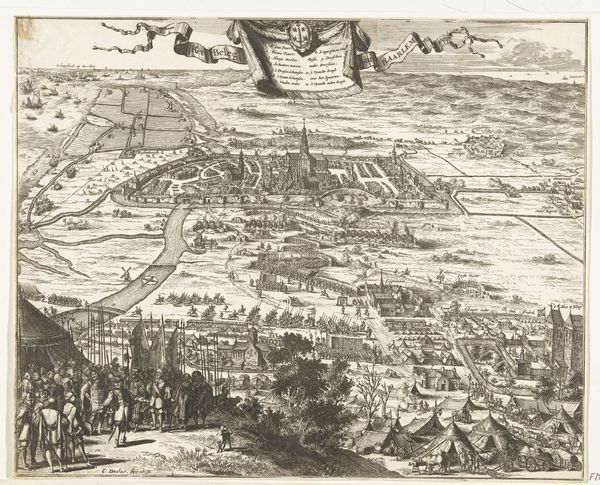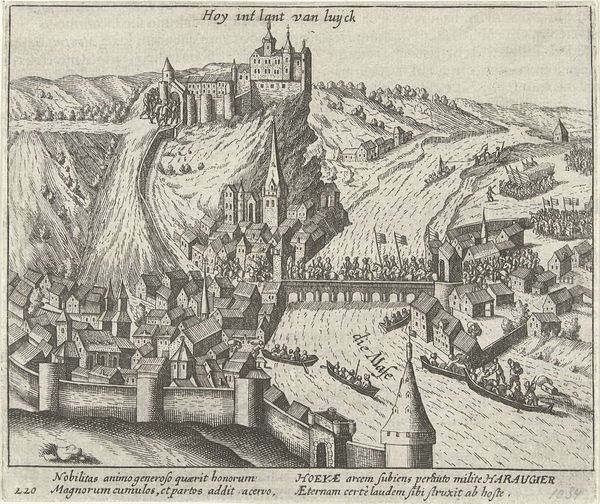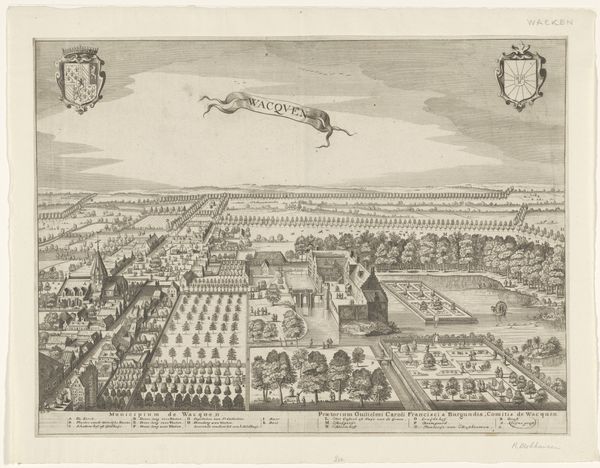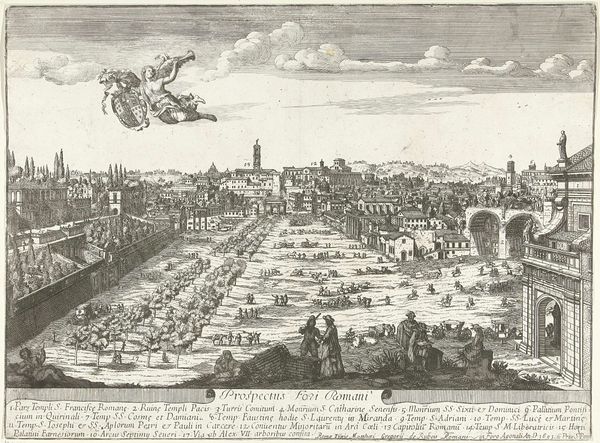
graphic-art, print, engraving
#
graphic-art
#
baroque
# print
#
landscape
#
cityscape
#
engraving
Dimensions: height 279 mm, width 344 mm
Copyright: Rijks Museum: Open Domain
Editor: This is "Slot Vredenburg te Utrecht in welstand, vóór 1577," a cityscape engraving made between 1701 and 1703 by Coenraet Decker. I'm immediately struck by the imposing walls and the scale of the fortress relative to the town. What's your take on this, what story does it tell? Curator: It tells a story of power and control, certainly. But let’s think critically about what this image *shows* and perhaps more importantly, what it *doesn't* show. Vredenburg Castle was built under Charles V precisely to control Utrecht, suppressing dissent. Decker made this engraving over a century later, yet focuses on a representation of a building that no longer existed – it was torn down in 1577 by the citizens themselves, in a revolt against Spanish rule. Why immortalize the oppressor? Editor: That's... complicated. So, is Decker commenting on the nature of power itself, perhaps its cyclical nature? Curator: Exactly! By depicting the fortress in its former glory *after* it had been demolished, Decker subtly acknowledges the ongoing tension between authority and the will of the people. The very act of representing it suggests that even in ruins, its memory and implications still occupy space. It provokes thought about cycles of oppression and liberation, even in the so-called "Dutch Golden Age." What isn't overtly stated becomes critical. The viewer must question: Who benefited from remembering Vredenburg's stronghold? Editor: I never would have considered that angle just looking at the image itself. It really challenges the conventional understanding of landscape art as purely celebratory. Curator: Precisely. Art isn’t simply what is apparent, but a nexus for unpacking ideology. It forces us to reflect on whose stories are prioritized. Editor: Thanks, it is a really helpful reminder to always consider the political and social context when analyzing an artwork!
Comments
No comments
Be the first to comment and join the conversation on the ultimate creative platform.
